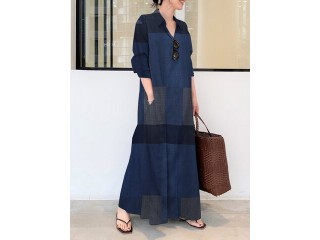Fashion Forward: How Three Revolutionary Fabrics Are Greening the Industry
3 years ago Fashion San Antonio 0.9K views Reference: 39704Location: San Antonio
Price: Contact us
If the holiday sales are tempting you to refresh your wardrobe, consider the environmental footprint of buying a new jacket and throwing away your old one. Today, about 80 billion new pieces of clothing are made each year—400 percent more than 20 years ago, while the world’s population only grew about 30 percent. That growth has a huge environmental cost. The Danish Fashion Institute named fashion “one of the most resource-intensive industries in the world, both in terms of natural resources and human resources.” Designer Eileen Fisher has called it “the second-largest polluter in the world… second only to the oil industry,” and while that fact has been disputed, a 2010 research paper found that the industry is responsible for almost 10 percent of global greenhouse gas emissions.
Moreover, once clothes have been made and worn for a short while, they’re thrown away. A new report from the Ellen MacArthur Foundation found that cumulatively around the world a truckload of clothes gets dumped every second. The average American tosses about 82 pounds of textiles a year, much of which ends up in landfills or incinerated. Of the clothing that reaches second-hand stores like Goodwill—only 15 percent of all discards—some is recycled into shoddy (filling for cheap furniture) or upcycled into things like denim insulation, but most of it is shipped to poorer countries. However, they too have limits—African countries including South Africa and Nigeria recently banned Western castoffs, which have overwhelmed their markets, causing the decline of their local fashion business.
Replacing Old Fabrics With New Biopolymers
Two types of textiles—petroleum-made polyester and field-grown cotton, often woven together—have been the fashion industry’s darlings for decades. “Much of [what we wear now] is a blend of PET, a petroleum-based fiber, and cotton fiber,” says Ramani Narayan, a professor in the Department of Chemical Engineering and Materials Science at Michigan State University. But these Sportswear Fabrics have their issues. Cotton, which makes over 30 percent of our clothes’ yarns, is a natural material, but it’s a thirsty crop that siphons 3 percent of the fresh water, and accounts for almost 20 percent of pesticides and 25 percent of the insecticides used in agriculture worldwide, before it’s even picked. Processing cotton—knitting, weaving, and dyeing—also takes water and energy, yielding more pollution. The production of polyester, the demand for which has doubled in the last 15 years, is an energy intensive process that requires a lot of oil and generates harmful emissions, including volatile organic compounds, particulate matter, and acid gases, like hydrogen chloride, all of which contribute to respiratory disease. “Adding PET to a textile gives you better performance—it makes Coarse Needle Fabrics more moisture-resistant and gives them more washability,” says Narayan, but these textiles don’t break down naturally, and instead fill up our landfills and oceans. Polyester threads discarded from washing machines have recently been found in fish, including some species we eat. Unless PET threads are decoupled from cotton and recycled, they don’t decompose, but separating fibers is very difficult.
AlgiKnit extracts alginate from kelp by adding certain salts to the seaweed base. After the so-called “salt bath” pulls the alginate from the kelp’s cell walls, the biopolymer is extracted from the seaweed residue, dried into a powder and fused into a yarn that can be turned into a variety of Fleece Fabric types. “The process is similar to that of synthetic materials, where one long continuous strand is produced,” says Tessa Callaghan, the co-founder of AlgiKnit. “The filament can be plied and twisted to increase strength, or cut into short fibers for other purposes.” AlgiKnit won National Geographic’s Chasing Genius Competition for developing this technology.
Using yeast to grow collagen eliminates the animal part of the equation—including slaughter and subsequent hide processing. It yields higher quality materials—perfectly shaped hides without branding marks or scars, and yields very large spans of leather, much bigger than a cow’s body. It also offers nearly endless creative design ideas. The new collagen can be sprayed on top of another Polar Fleece Fabric to create never-before-seen leather fashions, like the t-shirt that is currently on display at the Museum of Modern Art in New York as part of its Items: Is Fashion Modern? exhibit. This material can also be embossed or textured in ways that cow or pig leather just can’t.
Modern Meadow will be introducing Zoa to market in 2018. The production facilities are already available from related industries such as biofuels. “We use 200,000 or 500,000-liter fermentation tanks [for the yeast],” says Schofer, “So the infrastructure already exists around the globe to take this from lab to commercial levels.”




